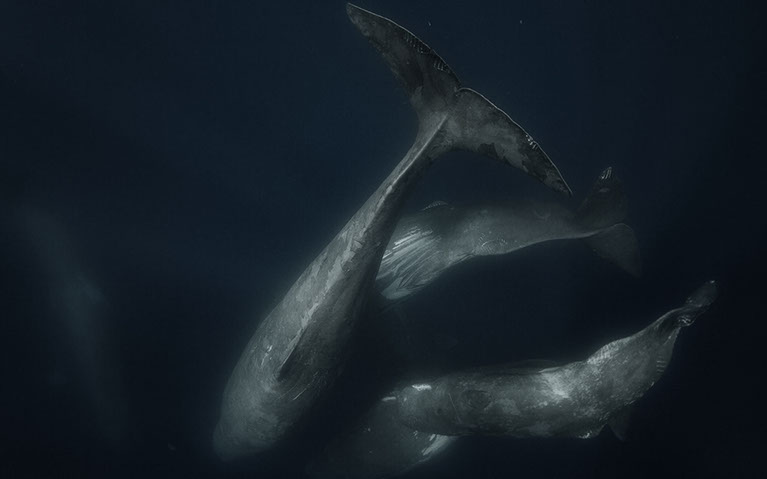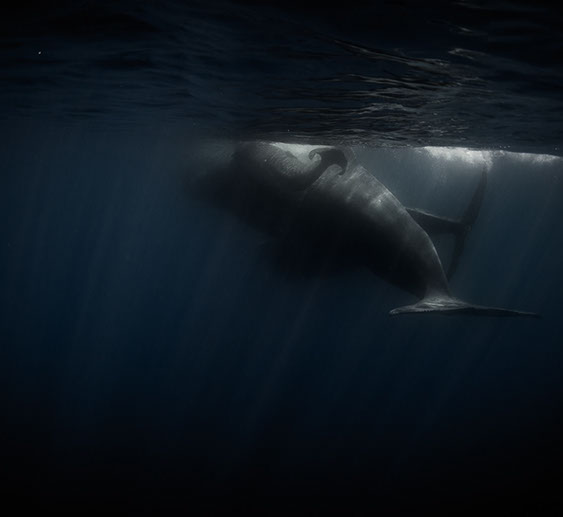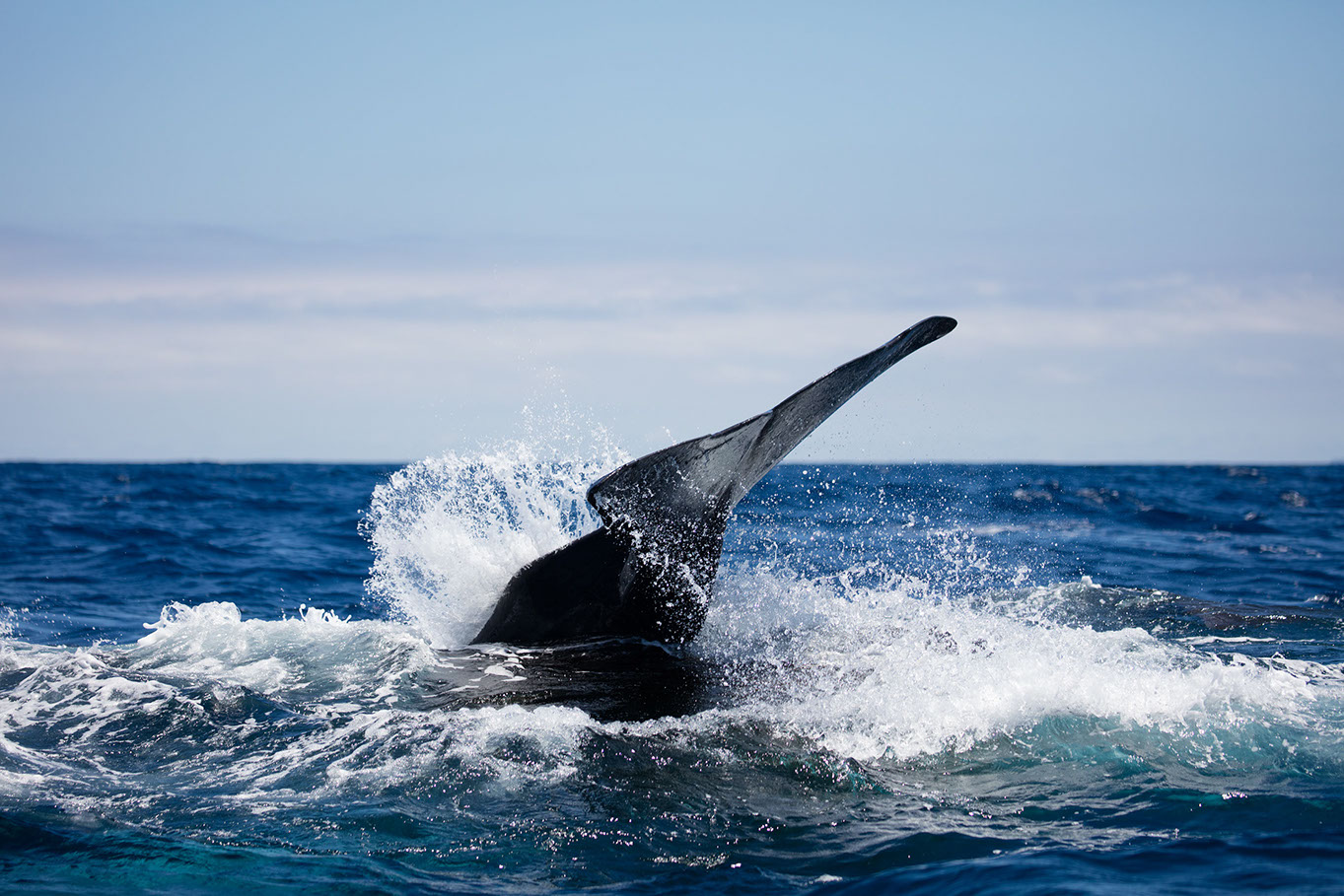



Some notes on photographing whales

Flukes weighing up to around two metric tons (as much as a large SUV!) thrash the water in the agony of labour, as a sperm whale gives birth off the Azores.
The first thing to remember is that it is illegal, almost everywhere in the world, to enter the water to photograph whales without a permit from the relevant authorities. All the toothed whales and dolphins on this website were photographed in the Azores under permits issued by the Secretaria Regional do Mar, Ciência e Tecnologia with precautions taken to avoid disturbance to the animals. Swimming with whales is forbidden in the Azores without prior written permission of the Secretaria.
The next most important point to remember is that wild whales are large, extremely powerful, able to react and move quickly, and demand the utmost respect.
Sperm whales, fin whales, pilot whales, and dolphins shown here were photographed in the Azores during our annual self-funded expeditions which began in 2005 off the island of Pico using boats and crews supplied by Frank Wirth at Pico Sport, and continue most recently off the island of Sao Miguel in collaboration with Ruben and Rui Rodriques and the staff of Futurismo. It is their extraordinary knowledge of the whales, and their commitment to their well-being, that consistently puts us in the right place at the right time to work with these wild animals. We use mask, snorkel, and fins only. Open-circuit scuba equipment would be an encumbrance for us and its streams of noisy bubbles would likely disturb many of the whales we meet.
Humpback whales on this site were photographed underwater in Vava’u in Tonga where we had the pleasure of working with Darren Jew and Whales Underwater.
Working with wild whales, that have not been habituated to human presence, seems to dispel notions of bonding between whales and humans. Targeted sprays of whale sonar, frequent eye contact, and sometimes close and intense scrutiny by curious whales, confirm that the whales are observing us, as we observe them. But that’s probably as far as it goes. The whales have complex relationships of their own, they live in a constantly threatening environment, and, other than passing curiosity, have no reason to view human encounters as anything more than just another data point in the vast array of information that they have to collect and analyse every day and night to survive.
From our own side of the encounters, though, it’s different. Every encounter, every opportunity to observe and record, is a privilege. And, hopefully, the observations and photographs might eventually contribute something towards greater understanding and appreciation for the
roles that cetacea play in the overall web of life on Earth.
To that end, the conditions of the permit issued by the Secretaria in the Azores require that copies of all photographs taken must be lodged with the Secretaria for its own use.
All the photographs we take are made available free of charge for any non-commercial uses related to research, education, or conservation. We routinely share them with whale and cephalopod scientists in various parts of the world. For access to these shots, please click here to contact us.